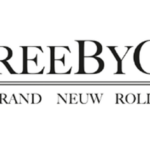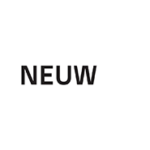Stockouts cost US and Canadian retailers an estimated $350 billion every year.
This is a key reason why we built Superfill – to help brands and retailers avoid lost sales, maintain optimal inventory levels, and ensure products are always available when customers need them.
We’ve found that wholesale businesses that have invested in our automated stock replenishment Superfill software have dramatically improved inventory flows thereby increasing sales and reducing obsolescence.
If your wholesale operation is struggling with stockouts, over-ordering, or the constant hassle of manual inventory tracking, this article will help you learn what automated stock replenishment is, the key benefits and the software we recommend to take your stock management to the next level.
Key Takeaways:
- Automated stock replenishment reduces stockouts and overstocking, ensuring brands maintain the right inventory levels to prevent lost sales and optimise cash flow.
- Automation reduces admin workload and human error, allowing brands to focus on growth instead of manual inventory management.
- Brands using automated replenishment strengthen retailer relationships and increase sales, as products remain consistently available, boosting in-store visibility and order volume.
- Automated stock replenishment protects brand footprints in the constant struggle for in-store representation, awarding brand strength and longevity.
Table of Contents
What is Automatic Stock Replenishment?
Automated stock replenishment ensures inventory stays at optimal levels by tracking real-time sales data, predicting future demand, and triggering replenishment orders when stock reaches a predefined threshold. This eliminates the need for manual ordering and reduces the risk of stockouts or overstocking.
For wholesale brands, automated replenishment streamlines stock distribution, ensuring retailers always have the right products available, at the right time… all the time. Instead of relying on reactive ordering, brands can use data-driven insights to maintain steady supply chains, improve cash flow, and reduce excess stock. This creates a more efficient, profitable, and predictable wholesale process.
By implementing automated replenishment, brands also strengthen relationships with retailers. Retailers trust suppliers who consistently deliver the stock they need—without delays or shortages.
For retailers, automation reduces admin work, preventing stock shortages that disrupt sales. Instead of placing orders manually, retailers receive stock at the right time, based on real-time demand. This means fewer lost sales due to empty shelves and less money wasted on overstocked items.
Retailers also benefit from better supplier relationships, as they can rely on brands to keep up with demand without constant follow-ups or emergency orders. With stock replenishment running automatically, retailers can focus more on selling products rather than managing inventory.
How Does Automated Stock Replenishment Work?
Automated stock replenishment relies on data-driven processes to ensure inventory levels are maintained efficiently. It integrates with sales systems, tracks stock movements in real-time, and triggers orders based on demand forecasts. Here’s how it works:
1. Data Integration
The system connects with a brand’s inventory and sales platforms, pulling real-time data on stock levels, retailer orders, and sales trends. This eliminates manual tracking and provides accurate insights into supply and demand.
2. Demand Forecasting
By analysing historical sales data, seasonal trends, and real-time order activity, the system predicts future stock needs. It adjusts replenishment schedules dynamically, ensuring that stock flows efficiently across retail partners.
3. Automated Order Triggers
When inventory reaches a set threshold, the system automatically generates a purchase order or refill request. This ensures stock is replenished before shortages occur, preventing lost sales and operational disruptions.
4. Multi-Channel Synchronisation
For brands working with multiple retailers, automated replenishment ensures stock consistency across various sales channels. Whether products are sold through online marketplaces, independent retailers, or large distributors, the system keeps supply and demand in sync.
5. Continuous Optimisation
Over time, the system refines its forecasting by learning from past sales patterns and adjusting stock orders accordingly. This leads to improved accuracy, better inventory turnover, and more efficient supply chain management.
By automating replenishment, brands can ensure a smoother, more predictable inventory process while reducing waste, improving cash flow, and strengthening retailer relationships.
Key Benefits of Automated Stock Replenishment for Brands
Automated stock replenishment isn’t just about keeping shelves stocked—it’s about making inventory management smarter, more efficient, and more profitable. Here’s how brands benefit:
1. Reduces Stockouts & Overstocking
Stock shortages lead to missed sales. Overstocking ties up capital in unsold inventory. Automation ensures brands maintain the right stock levels at the right time, preventing lost revenue while keeping cash flow healthy.
2. Saves Time & Lowers Admin Costs
Manual stock management requires constant monitoring, ordering, and coordination with retailers. Automation eliminates repetitive tasks, allowing sales teams to focus on growing the business instead of chasing stock levels.
3. Improves Cash Flow & Profitability
Holding excess stock increases storage costs and risks product obsolescence. Automated replenishment helps brands optimise inventory turnover, ensuring products move efficiently and capital isn’t wasted on unnecessary stock.
4. Strengthens Retailer Relationships
Retailers expect reliable stock availability. Automated replenishment ensures brands can deliver consistently without delays, building stronger partnerships and improving retailer trust. When retailers know they can count on a brand for timely restocks, they are more likely to prioritise its products.
5. Increases Sales & Efficiency
When best-selling products are always in stock, brands can maximise sales opportunities. Automated replenishment ensures that demand is met without delays, helping brands scale operations without the bottlenecks of manual inventory management.
6. Reduces Human Error & Enhances Accuracy
Even the most experienced teams make mistakes when handling stock manually. Automation removes the risk of miscalculations, forgotten orders, or delays, ensuring a smooth and efficient inventory process.
By automating stock replenishment, brands gain a competitive edge, ensuring seamless operations while improving efficiency and profitability.
How Superfill Takes Automated Stock Replenishment to the Next Level
Managing stock manually is time-consuming, and stockouts lead to missed sales opportunities. Superfill bridges this gap by semi-automating stock replenishment, helping brands ensure their products are always available at retail locations without the hassle of constant monitoring.
By integrating with retailers’ Point of Sale (POS) systems, Superfill tracks real-time inventory levels and generates refill orders automatically. This means stock is replenished based on actual sales data, reducing the risk of both shortages and overstocking. Retailers get the stock they need without overcomplicating their processes, and brands maintain a consistent in-store presence without excessive admin work.
With Superfill, brands and retailers work smarter, not harder. Products stay on shelves, retailers avoid lost revenue, and brands strengthen their market position. The result? A more efficient, profitable, and scalable stock management system that drives sales growth.
Learn more about how Superfill is revolutionising automated stock replenishment software.
Book a Demo Today
Automating stock replenishment is no longer a luxury—it’s a necessity for brands looking to scale efficiently.
With the right system in place, you can reduce stock issues, strengthen retailer relationships, and drive higher sales.
Superfill simplifies this process, ensuring your products are always available where they need to be.
Our automated stock replenishment software is just one of the many features our B2B Wholesale Platform offers that will help you unlock your business’s full potential, however.
Book a demo today to learn how Branscope can help you sell more, reduce costs, market & educate & expand distribution.
Brandscope supports over 500 brands and 50,000 retailers in more than 45 countries.









